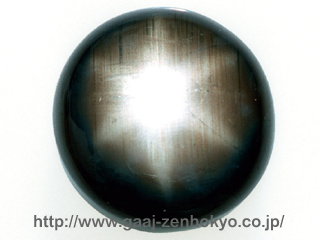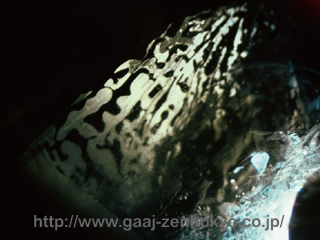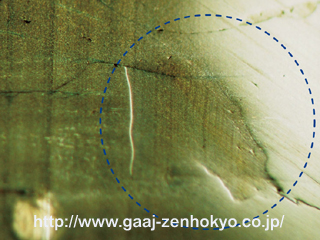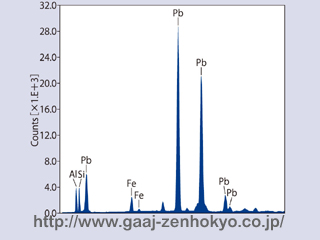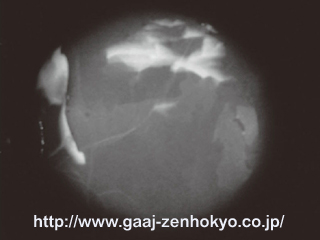|
||||||||||||||||
We recently identified lead glass filled black star sapphire. A lead glass filled corundum variety has been mainly limited to ruby, but we should now pay attention on other corundum varieties for this treatment. The details of the material are reported here. |
||||||||||||||||
| Lead glass filled treatment in ruby started appearing on the gem market at the beginning of 2004 (Lead glass filled Ruby). Rubies treated in this way spilled throughout the market rapidly and serious cases were reported not only by domestic but also international gemmological laboratories. This treatment also spread to star rubies or ruby beads for a necklace and the condition of ruby identification was largely influenced (Lead Glass Filled Ruby -update-). |
||||||||||||||||
This time we report on a black star sapphire that was filled with lead glass (photo 1). The stone was a buff top loose weighing 53 carats and displayed vague asterism. Brown needle-like inclusions (unconfirmed but assumedly hematite) were abundantly included so that it would show distinct star effect if it had been cut with high dome.
|
||||||||||||||||
The RI of the stone was 1.77 by spot method, and it was inert both under LW and SW UV. Needle-like inclusions and fluid inclusions were recognised under magnification observation, which required a strong fibre optic light source due to poor transparency of the stone. Some area with liquid film, where filling was applied, contained squashed gas bubbles that were spread on a certain plane (photo 2), and the top of a polished surface showed a certain area with low reflectivity, where was filled with glass (photo 3). This glass exposed to the surface was targeted for chemical analysis with X-ray fluorescence. As shown in the figure 1, large amount of Pb, Si and Al were detected, among which Al assumedly originated from the host mineral, corundum. Consequently, the chemical compositions of the filled glass were SiO2 and PbO, with their molar ratio 3:1. The stone was further tested on X-ray transparency to confirm the degree and distribution of the filling. The white area on the photo 4 corresponds to the filling of lead glass.
|
||||||||||||||||
| This is the first case at the GAAJ-ZENHOKYO laboratory to confirm the lead glass filling treatment in a black star sapphire, but it gives us an alert for filling treatment including other corundum varieties. For further information, please contact: GAAJ-ZENHOKYO Laboratory E-mail: ahmadjan@gaaj-zenhokyo.co.jp |
